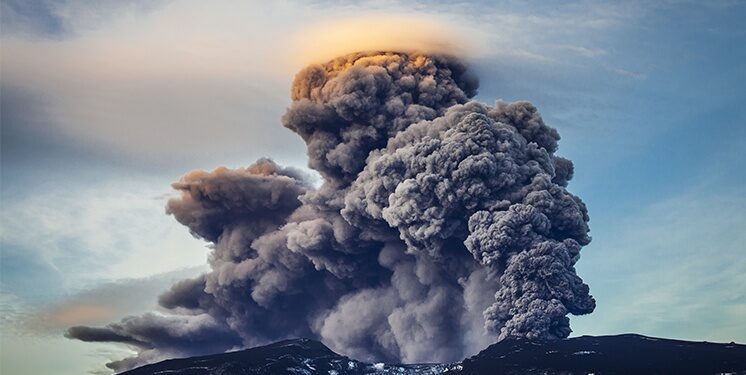If carbon capture and storage (CCS) was fracking for gas, it would have been banned years ago. Both processes can cause earth tremors – equivalent to a man falling off a chair in the case of fracking, but potentially much greater with carbon capture. This is because it involves millions of tonnes of pressurised carbon dioxide being pumped into rock cavities possibly compromised by prior drilling holes. Waste water from pressurised oil and gas projects has been known to escape from degraded drill plugs causing geysers 100-foot high. Such a catastrophe on land with millions of tonnes of CO2 waiting to escape is not a good prospect. On August 21st, 1986 the sudden high pressure release of magmatic CO2 from the bed of Lake Nyos in Cameroon led to heavier-than-air CO2 suffocating all living beings in the surrounding villages including 1,746 people.
CCS divides a green movement riven with disagreements as its climate crisis grift starts to fall apart in the face of reality. Capturing CO2 and burying it in the ground has been described by one influential green think tank as a “colossal waste of money”. Wasting taxpayers’ money is not something most greens lose sleep over, but they dislike CCS because it allows a role, albeit limited, for future hydrocarbon use. As we recently reported in the Daily Sceptic, the penny has finally dropped in the U.K. that there is no backup to a 2030 renewable energy grid except gas, so the Mad Miliband has authorised a £22 billion CCS black hole. It is a colossal waste of money, but it provides a fig leaf to cover the continued use of hydrocarbons.
If governments in the United States and Europe are going to pump many billions of tonnes of pressurised gas into the substrata beneath our feet heavily pockmarked with thousands of filled drill holes, it might be a good idea to look into the wisdom and safety of this course of action. Such a task cannot be left to mainstream media, although they were quick to run stories of earthquakes and tap water catching fire in the cause of demonising gas fracking (yes really, check it out).
First some geology. Natural gas is found next to oil fields near the surface but it also accumulates at much deeper levels. It is held in place by a layer of sedimentary rock such as limestone or sandstone. In the U.S., the Permian basin runs across west Texas and south western New Mexico and its rich deposits have been drilled for over a hundred years. The area is riddled with hundreds of thousands of drill holes. Location records and safety checks on some of these holes are now non-existent.
In 2016, a group of Penn State researchers observed that when CO2 is stored underground in a process known as geological sequestration “it can find multiple escape pathways due to chemical reactions between CO2, water, rocks and cement from abandoned wells”. There are concerns that CO2 could leak into groundwater drinking aquifers or dissolve into saltwater deposits. As a result, the high acidity saltwater-CO2 can dissolve certain types of rocks as well as cement casing on abandoned wells. There are fears that a plume of CO2-saturated brine could break free to the surface, with presumably millions of tonnes of pressurised gas looking for a chance to follow.
Engineering professor Mary Kang of McGill University claims she has seen “countless instances” of plugged oil wells failing to hold. Cement is no match for earthquakes, heat and time, notes Eric Van Oort, an engineering professor at the University of Texas-Austin. “You have tectonic stresses, high temperatures – things are changing and shifting in the subsurface,” he said. He was of the view that plugged holes may start leaking in the future.
Current plans in the UK are to bury the CO2 under offshore waters. Hence some of the staggering costs involved. But nowhere is safe from the forces of nature and the British Geological Survey recently said that CCS needed to be “vigorously monitored” to provide an assurance of long-term storage integrity. That would be vigorously monitored for the thousands of years it is planned to keep the CO2 underground. Good luck with that one. Regulatory frameworks governing geological CO2 storage are being developed worldwide with issues of leakage and long-term stewardship being addressed. Again, good luck with asking future generations thousands of years hence to keep coughing up £22 billion (note to reader: feel free to invent your own very large figure at this point) to ensure vast quantities of highly pressurised gas are safely stored beneath the surface.
DeSmog was recently topped up with £400,000 from the Left-wing money tree Rowntree Foundation to continue promoting fracking scare stories and its notorious ‘blacklist’ of so-called climate deniers. On October 4th, it reported that a blowout in the Permian basin had created a 100-foot tower of oily water. Drilling and fracking uses millions of gallons of water a day in the area, noted DeSmog. “It’s a ripper,” said Hawk Dunlap, a libertarian candidate for the Railroad Commission. “It could be coming from anywhere and it’s not going to be an easy fix,” he said. DeSmog reports that Dunlap said the region where the geyser erupted has been plagued by earthquakes amid record wastewater production.
DeSmog is all in on the invented climate crisis and a fervent supporter of the political Net Zero fantasy. It obviously hates all hydrocarbon use and has reported on the problems of carbon capture. For its part, mainstream media just sticks with demonising fracking. Donkey nodding politicians in many jurisdictions accept the need for huge quantities of money to be poured down the CCS hole but are obviously uninformed about the risks involved.
Chris Morrison is the Daily Sceptic’s Environment Editor.











To join in with the discussion please make a donation to The Daily Sceptic.
Profanity and abuse will be removed and may lead to a permanent ban.
What frightens me is the realisation in recent years that there are many people among us who want to censor speech in a very big way. Powerful, influential policy makers who want this stuff
I grew up convinced that literally everyone thought free speech was unquestionably a good thing.
It pains me to realise I was.completely wrong.
Wholly agree.
What astounds me is that discussions around ‘free speech’ are now taking up so much of our time. Even as recently as twenty years ago free speech or lack of rarely came up for debate. Now? Not a day goes by where some organisation isn’t redefining ‘free speech’ and the redefinition is always against free speech even though it is a bloody certainty that the author maintains otherwise.
Ony two things to know about free speech (1) It’s free, and (2) It’s only speech.
What frightens me more is that lots of people I know seem to be quite happy with the idea that mis and dis information should be regulated/suppressed. Some of them I suspect because the prevailing orthodoxy coincides with their ideas, and some of them because they are lazy and want to outsource critical thinking to some “trusted” third party.
On discussing this kind of stuff with a friend who isn’t particularly interested in Politics because to him it is all boring stuff and he would prefer going to the football with his kids, going fishing or going off to a caravan with his Border Terrier, he said “Well you cannot go around calling people fat”———-I could not believe my ears. I said to him “It is not the proper role of government to be regulating what we can all say and cannot say to each other, they cannot even stop us stabbing each other or burgling each other and they cannot even stop morons walking into supermarkets and filling up their rucksack”
Good, small victories and all that. Hopefully McEntee and her ilk will be shown the door at the next election. Lots of ordinary Irish are *not* happy with the way things have gone in that country.
The abomination that is the piece of “art” described in the article is horrendously offensive to Christians like myself, and it is an affront that such an obviously deliberately provocative and mocking piece was considered suitable for public exhibition (let alone the fact that it is of no artistic merit).
How Ireland has fallen.
What has happened to the Weekly Sceptic podcast with Young and Dixon? Is it a summer break
No its all over. Mutual agreement apparently. Nick Dixon has his podcast “The Current Thing”
Oh thanks : I used to enjoy it
“Under the current iteration of the bill, it is a crime punishable by up to five years in jail to say anything, on- or offline, which anybody with a protected characteristic drawn from a long-list of such characteristics –race, religion, national or ethnic origin, gender (including transgender), etc. – perceives to be hateful”
WHAT?????????????????????????????????????????????? You have got to be joking? The general Public should NEVER EVER STAND FOR THIS TOTALTARIAN NIGHTMARE
Someone has decided to thumbs down me for my comment. That is fair enough as everyone is entitled to an opinion, but let us just be clear then that this person obviously thinks that if anyone “PERCEIVES” someone’s words to be hateful then it is automatically so and they should face imprisonment.–Anyone who thinks this is what should happen in a free society is a blithering idiot and so the person who down ticked me is therefore a blithering idiot. ——-I hope you don’t perceive that as too hateful, but if you do, I do not give a s..t.
It was great back years ago when you could tell jokes like this (which should be told with a strong Dublin accent)——— Paddy goes into a chemist shop and says —“Have you anything at all now for a severe loss of the voice”?, and the assistant replies “Good Morning now sir, can I help you at all”? —–But we cannot tell jokes like this anymore so I won’t tell it.